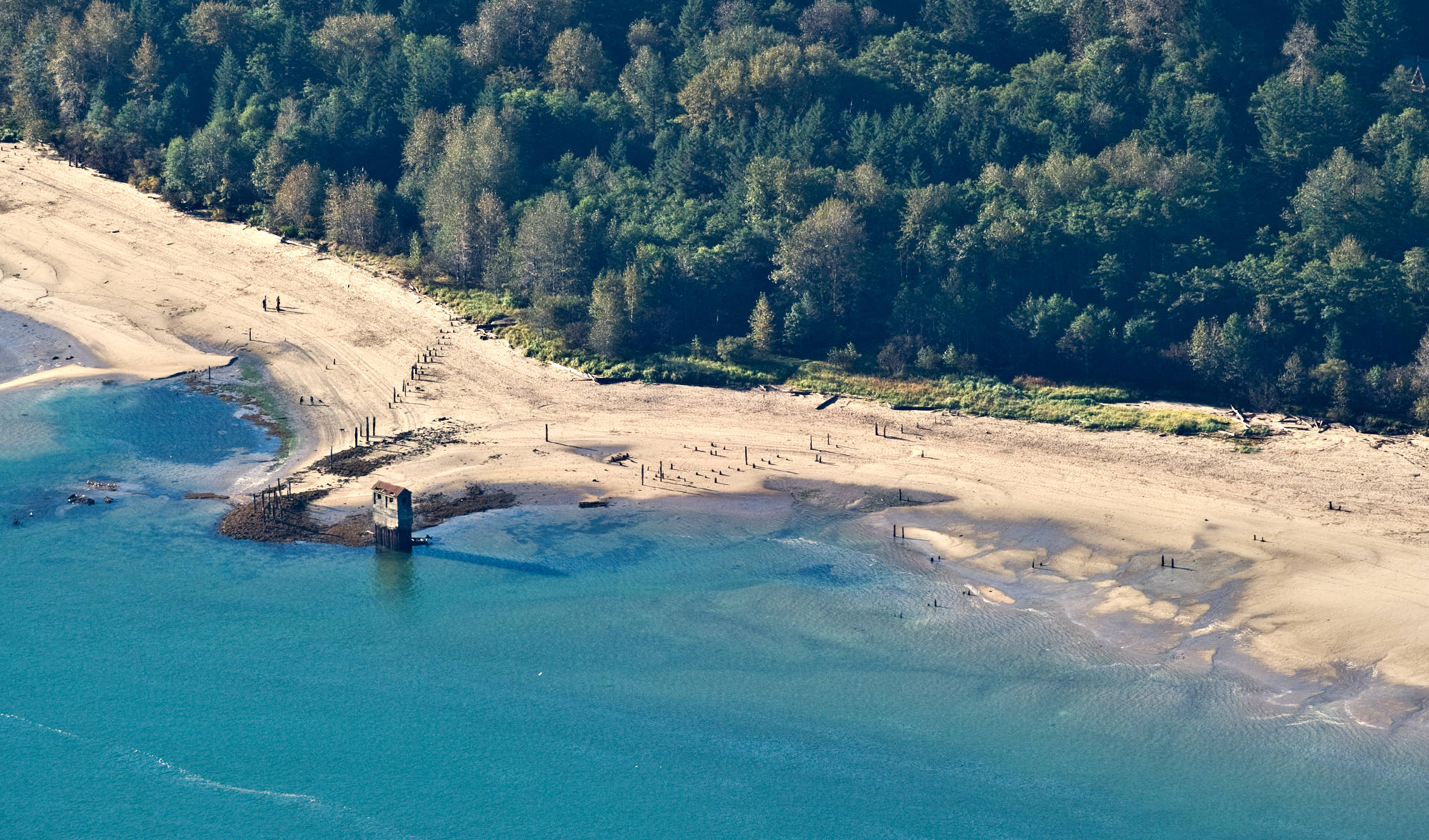A year ago this week, state workers discovered a human leg in Gastineau Channel near Sandy Beach. After a year of testing, authorities are no closer to identifying who the leg belongs to, they say.
Though they weren’t able to identify the dismembered limb, investigators said they concluded the leg was likely more than 10 years old.
On May 22, 2017, the Douglas Indian Association and Natural Resources Consultants Inc. were using a dredger that drags debris up from the bottom of the channel, collecting old fishing gear that was still catching fish, a phenomenon known as “ghost fishing.”
What they ended up finding, police said, was a human leg with a boot still attached. Kamal Lindoff, the DIA project manager who pulled the leg up, said the bone was black and flesh remained in the boot. Law enforcement instructed DIA to stop work in the area where the boot was found, which was not more than a few hundred yards in front of Lucky Me, a small community on south Douglas Island, Lindoff said.
DIA employees called the Alaska State Troopers, who then called JPD.
Police released very few details about the leg, not specifying race, gender or kind of boot. The remaining portion of the leg was from the knee down, police said. The leg was sent to the State Medical Examiner’s Office at the time, police said.
Chief Medical Examiner Dr. Gary Zientek told the Empire in an interview Tuesday that investigators from his office weren’t able to get any useful DNA from the leg due to how much it had deteriorated in the water.
“No DNA could be recovered,” Zientek said, “so it’s almost impossible to match it up to a missing person.”
Zientek and Dr. Cristin Rolf from the office said the leg they received was a worn-down bone wearing a rubber boot. They did not specify the brand of the boot. They said the bone is currently at the State Medical Examiner’s Office in case they can figure out a way down the line to do more effective testing.
Zientek said a forensic pathologist examined the bone and estimated it was more than 10 years old based on how worn down it was. Zientek said the leg had clearly been in water for a long time by the time it was found, which wore the leg down and made it very difficult to recover any kind of DNA.
The leg was sent to National Medical Service (NMS) Labs in Pennsylvania for further testing, according to the police report. The findings from that lab, according to the police report, also stated there wasn’t enough DNA to test. Zientek and Rolf said the leg was still at the State Medical Examiner’s Office.
A dive team searched the area where the leg was found, JPD Lt. Krag Campbell said, and wasn’t able to find anything else related to the leg.
Zientek said his office examines around a dozen bones per year that wash up on shore. He said one of the reasons for this is graveyards near the water that erode, but he said this leg did not appear to come from a graveyard.
The discovery of lower body parts in the Northwest has been in the news lately. On May 7, the Royal Canadian Mounted Police announced a human foot had been found on British Columbia’s Gabriola Island the previous day. This unusual find was significant because this was the 14th foot that has washed up on British Columbia shores since 2007, the Washington Post and other news outlets reported.
Most of the feet that have appeared on the shores were wearing tennis shoes, the Post reported, but the police release stated the foot found on Gabriola Island was wearing a hiking boot.
Andy Watson, a spokesperson for the British Columbia Coroner’s Office (which has been investigating the feet washing ashore), said Tuesday that the office works with some departments in the United States to assist with their investigations, but did not work with JPD in this case.
• Contact reporter Alex McCarthy at 523-2271 or amccarthy@juneauempire.com. Follow him on Twitter at @akmccarthy.

